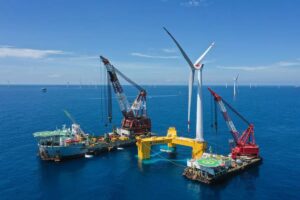Can Weather Risk Transfer Help Solar and Wind Development?

It is always good news that renewables are gaining rapid growth. Despite this, assimilation has proven to be slow. On top of that, the current number still constitutes too small a fraction to transition into a low-carbon economy that can mitigate the effects of climate change.
Governments need to step up their support if we want to see significant improvement regarding this topic. They must provide public support, subsidies, and reallocation methods.
The International Monetary Fund argues that high carbon industries are subsidized so pervasively that they distort the market and capture governments. While it is unlikely that this will be resolved in the near future, the market has responded to these issues in other ways.
Capital Structure
If we want to see accelerated development, it might be time to give capital markets incentives to bring down financing and “soft” costs. We can look at the market as consisting of three generic groups.

Sponsors
These project developers coordinate finance for design, planning, permitting, procurement, and more. They manage costs to compete as suppliers of electricity and offer competitive prices. Among their prime considerations would be offtake risk, revenue fluctuations, and tax equity partnerships.
Off takers
This group encompasses the end users of generated power, including major utilities, corporations, universities, and municipalities. They are pressured to purchase renewable generation for statutory requirements, more affordable pricing, and increasing participation of corporations committed to renewable energy use.
Portfolio funds
Asset holders acquire projects for operation, distribute earnings, and focus on the net yield. Some of them are publicly traded, private infrastructure funds, clean energy investment trusts, and green bonds.
They are in charge of aggregating operating renewable projects, absorbing accelerated depreciation tax credit investment, and distributing earnings in dividends.
Risk mitigation may add value to asset managers and developers, but there are other considerations as well. It is also important to factor in tax policies and factors that affect the willingness of a utility to improve its renewable capacity. Regardless, risk mitigation in renewable energy development will always be welcome.


